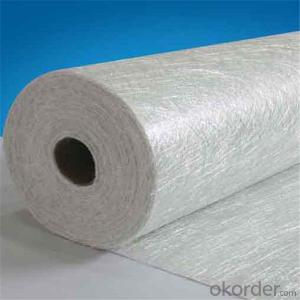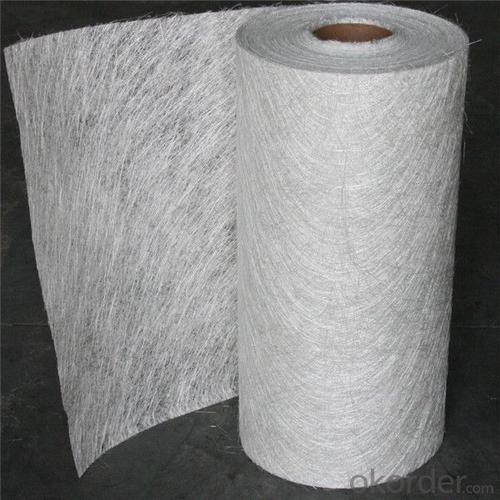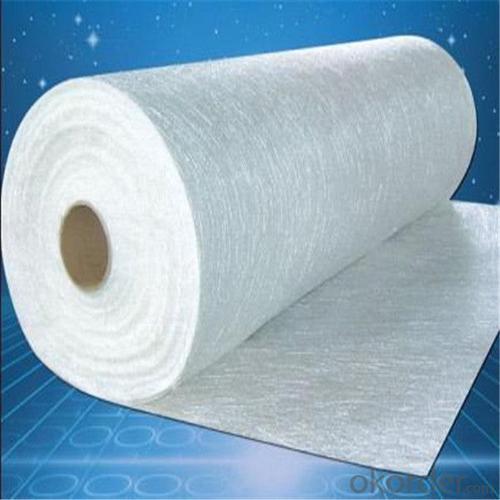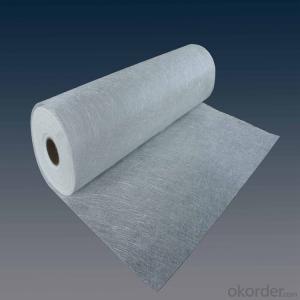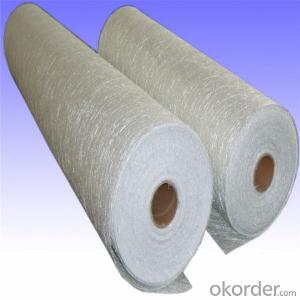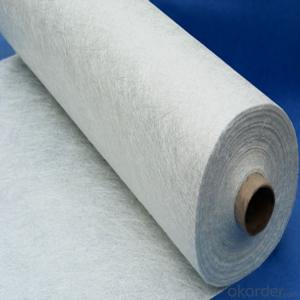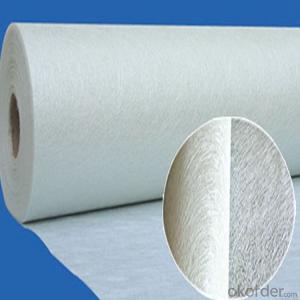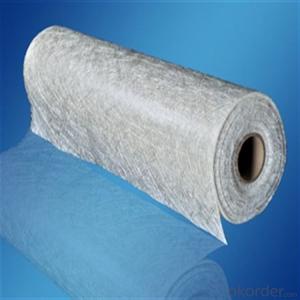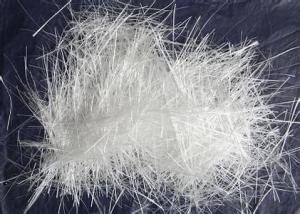Fiberglass Chop Strand E-Glass Chopped Strand Mat and Woven Fiberglass Cloth
- Loading Port:
- Tianjin
- Payment Terms:
- TT OR LC
- Min Order Qty:
- 100 m.t.
- Supply Capability:
- 10000 m.t./month
OKorder Service Pledge
OKorder Financial Service
You Might Also Like
Quick Details
| Technique: | Chopped Strand Fiberglass Mat (CSM) | Dimensions: | 80g - 900g | Mat Type: | Continuous Filament Mat |
| Fiberglass Type: | E-Glass | Softness: | soft, very soft | Place of Origin: | Shandong, China (Mainland) |
| Brand Name: | cnbm | Model Number: | CSM | material: | fiberglass |
| Glass type: | E glass / C glass | Bond type: | powder or emulsion | Roll width: | 200 - 2600mm |
| Roll weight: | 28 - 55kgs | Density: | 225g/m2, 300g/m2, 450g/m2 | Certification: | ISO, CE |
Packaging & Delivery
| Packaging Details: | standand export packing . or packed as customer's need |
| Delivery Detail: | 10-20days after the contract is effective |
Specifications
Fiberglass Chopped Strand Mat
1.good combination fo resin
2.easy operation
3.good wet strength retention
Specification:
Fiberglass Chopped Strand Mat is an non-woven E- or C-glass fiberglass fabric manufactured by spreading continuous filament rovings of 50mm in length randomly and uniformly in combination with polyester binder in power form (or other binder in emulsion form). Powder or Emulsion fiberglass fiber chopped glass mat


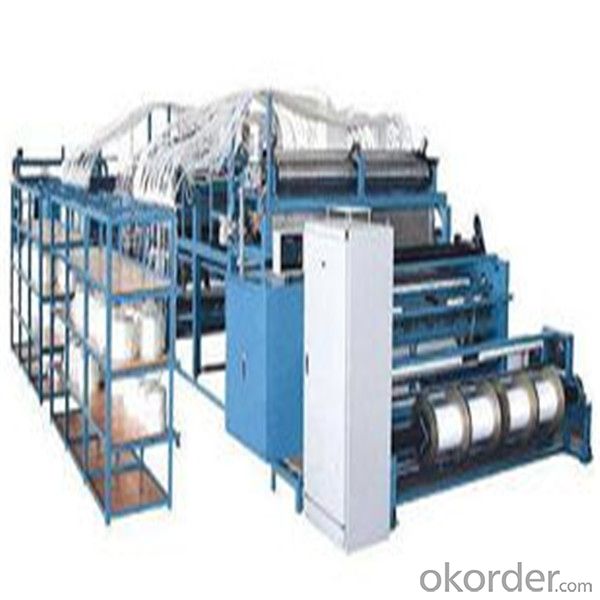
- Q: Can fiberglass chopped strand be used in the manufacturing of sports equipment?
- Yes, fiberglass chopped strand can be used in the manufacturing of sports equipment. It is commonly used as a reinforcement material in composite structures due to its lightweight, high strength, and excellent impact resistance properties. Fiberglass chopped strand can be incorporated into various sports equipment such as tennis rackets, hockey sticks, surfboards, and bicycle frames to enhance their performance and durability.
- Q: Brief introduction of glass fiber cloth
- Statin (similar to unidirectional cloth). It is different from the ordinary fabric, but also can be used in the production of glass fiber reinforced, three-dimensional woven fabrics and other forms of three-dimensional fabric. In certain applications will also further roving short cut, as well as for corrosion resistant occasions, which is generally used in glass mat. The shape of a solid fabric is massive. Alkali free glass fiber tape is commonly used in the manufacture of high strength, rectangular, unidirectional fabrics. Single warp fabric is a kind of coarse and fine warp weft four by breaking satin or long satin fabric, wet mechanical strength shall meet the requirements, greatly improves the shear strength of composites and resistance damage tolerance, and then use the barbed needle acupuncture. It is a continuous glass strand by throwing silk device randomly thrown in continuous mesh belt, such as winding, mould. The dumbbell shaped fabric, flat selvedge and weft density; the fabric made of laminated material to avoid the pollution of the process . The fiber in the continuous glass fiber felt is continuous. The most typical braid is a layer of warp and weft overlap together. Glass cloth is mainly used for producing all kinds of electric insulation laminate.
- Q: How is the quality of fiberglass chopped strand ensured?
- The quality of fiberglass chopped strand is ensured through various methods such as rigorous testing and inspection during the manufacturing process. This includes monitoring the raw materials used, controlling the manufacturing parameters, and conducting physical and mechanical tests to ensure the desired quality standards are met. Additionally, quality control measures are implemented to check for any defects, such as improper chopping length or contamination, before the final product is released.
- Q: How does the weight of the chopped strand affect its performance?
- The performance of chopped strand is significantly influenced by its weight. Chopped strands are commonly employed as reinforcement in composite materials, like fiberglass, to enhance their strength and durability. The weight of the chopped strand directly impacts the amount of reinforcement added to the composite material. A higher weight of chopped strand implies an increased number of fibers being incorporated into the composite, resulting in greater strength and stiffness. This is due to the fibers serving as structural reinforcements, distributing the load and preventing crack propagation. Hence, materials with heavier chopped strand reinforcement can endure higher stress levels and exhibit enhanced resistance to impact and fatigue. Conversely, a lower weight of chopped strand may be preferable in specific applications where flexibility or weight reduction is desired. For instance, in situations where the composite material needs to be lightweight or flexible, a lower weight of chopped strand can be utilized to maintain the desired mechanical properties while reducing the overall weight of the final product. It is important to acknowledge that the performance of the composite material is not solely determined by the weight of the chopped strand. Other factors, such as the length and orientation of the fibers, the type of resin matrix employed, and the manufacturing process, also play crucial roles in determining the overall performance. Therefore, it is essential to consider these factors in conjunction with the weight of the chopped strand when designing and engineering composite materials.
- Q: Production and process of glass fiber
- The process of glass fiber generally includes: Purchase raw materials, mix according to the formula, and then transferred to the glass furnace for melting and refining, after operation channel flow to the bushing, the sizing agent after coating by wire drawing machine traction, then form the original cake, and then flow to the rear section reprocessing procedures (usually a short cut, winding, weaving, puffing and twisting) or sell (direct yarn)
- Q: What types of resins are compatible with fiberglass chopped strand?
- There are several types of resins that are compatible with fiberglass chopped strand. The most commonly used resins include polyester, vinyl ester, and epoxy. These resins have excellent adhesion properties and bond well with the fiberglass strands, resulting in strong and durable composite materials. It is important to select the appropriate resin based on the specific application and desired properties of the final product.
- Q: What are the impact resistance properties of fiberglass chopped strand?
- Fiberglass chopped strand possesses exceptional impact resistance, enabling it to endure sudden forces and impacts without fracturing or breaking. This quality has established it as a favored material in diverse industries. The impact resistance of fiberglass chopped strand can be primarily attributed to its distinct composition and manufacturing process. The fibers, which are randomly chopped, are combined with a binder to create a mat or matting. These fibers are typically constructed from glass, imparting them with outstanding strength and durability. By virtue of its inherent properties, fiberglass chopped strand showcases remarkable impact resistance. When confronted with sudden forces or impacts, the fibers in the chopped strand matting distribute the load uniformly across the material, dissipating the energy and averting the formation of cracks or fractures. Consequently, fiberglass chopped strand is a reliable option for applications necessitating impact resistance, such as automotive components, boat hulls, and construction materials. Moreover, the impact resistance of fiberglass chopped strand can be further enhanced by introducing resin or other additives during the manufacturing process. This facilitates the customization of its impact resistance properties to satisfy specific requirements. By adjusting the resin content or incorporating supplementary materials, the impact resistance of fiberglass chopped strand can be heightened to withstand even greater forces or impacts. In conclusion, the composition and manufacturing process of fiberglass chopped strand result in its exceptional impact resistance properties. Its capacity to absorb and distribute impact forces renders it a versatile material for diverse applications. Whether utilized in the automotive, marine, or construction sectors, fiberglass chopped strand is an assured choice when durability and impact resistance are paramount considerations.
- Q: Is fiberglass chopped strand suitable for applications requiring high impact resistance?
- No, fiberglass chopped strand is not suitable for applications requiring high impact resistance. While fiberglass chopped strand is known for its strength and durability, it does not possess the necessary properties to withstand high levels of impact. It is more commonly used in applications where strength and stiffness are the primary considerations, such as in automotive parts, boats, and construction materials. For applications that require high impact resistance, other materials such as carbon fiber or Kevlar are more suitable options. These materials have superior impact resistance properties and are commonly used in industries such as aerospace, sports equipment, and personal protective equipment.
- Q: How does the fiber orientation of fiberglass chopped strand affect its performance?
- The fiber orientation of fiberglass chopped strand significantly affects its performance. The orientation determines the strength and stiffness of the material in different directions. Fiberglass with random fiber orientation provides isotropic properties, meaning it has similar strength in all directions. On the other hand, aligned or oriented fiberglass with fibers predominantly in one direction offers enhanced strength and stiffness along that axis. Therefore, the fiber orientation of fiberglass chopped strand can greatly impact its mechanical properties, making it more suitable for specific applications requiring strength in a particular direction.
- Q: What are the typical hardness properties of fiberglass chopped strand composites?
- The typical hardness properties of fiberglass chopped strand composites can vary depending on the specific composition and manufacturing process. However, fiberglass chopped strand composites generally exhibit good hardness properties, with a high resistance to scratching and indentation. This makes them suitable for various applications where hardness and durability are important, such as automotive parts, marine equipment, and construction materials.
Send your message to us
Fiberglass Chop Strand E-Glass Chopped Strand Mat and Woven Fiberglass Cloth
- Loading Port:
- Tianjin
- Payment Terms:
- TT OR LC
- Min Order Qty:
- 100 m.t.
- Supply Capability:
- 10000 m.t./month
OKorder Service Pledge
OKorder Financial Service
Similar products
Hot products
Hot Searches
Related keywords




